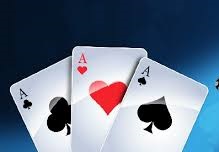Teenpatti Hierarchy, a traditional Indian card game often compared to poker, is known for its blend of strategy, skill, and luck. The game is played with a standard deck of 52 cards and involves multiple players betting on the strength of their hands. One of the essential aspects of mastering Teen Patti is understanding the hierarchy of card combinations, which determines the winner of each hand. In this article, we’ll delve into the hierarchy of hands in Teen Patti, explaining each combination and its significance.
Teen Patti Hand Hierarchy
In Teen Patti, the strength of a hand is determined by the hierarchy of card combinations. Here’s a detailed look at the different hands, ranked from highest to lowest:
- Trail (or Set)Meaning: A Trail consists of three cards of the same rank. For example, three kings or three fives.
Significance: This is the highest-ranking hand in Teen Patti. A Trail is unbeatable and ranks above all other combinations. In the event of two players having a Trail, the hand with the higher rank cards wins.
Example: 7♠ 7♦ 7♣.
- Pure Sequence (or Straight Flush)Meaning: A Pure Sequence is a set of three consecutive cards of the same suit. For example, 4♠ 5♠ 6♠.
Significance: This hand ranks just below a Trail. If two players have a Pure Sequence, the one with the higher top card wins.
Example: 9♦ 10♦ J♦.
- Sequence (or Straight)Meaning: A Sequence consists of three consecutive cards of different suits. For example, 2♣ 3♦ 4♠.
Significance: This hand ranks below a Pure Sequence but above all other hands. If two players have a Sequence, the one with the highest top card wins.
Example: 10♠ J♣ Q♦.
- Color (or Flush)Meaning: A Color is a set of three cards of the same suit, but not in a consecutive sequence. For example, 5♠ 7♠ K♠.
Significance: This hand ranks below a Sequence. If two players have a Color, the hand with the highest card wins. If the highest cards are the same, the second highest card is compared, and so on.
Example: A♠ 3♠ 9♠.
- PairMeaning: A Pair consists of two cards of the same rank and a third card of a different rank. For example, 8♣ 8♥ 2♦.
Significance: This hand ranks below a Color. If two players have a Pair, the one with the higher pair wins. If the pairs are the same, the hand with the higher third card wins.
Example: Q♦ Q♠ 3♣.
- High CardMeaning: A High Card is a hand that does not fit into any of the above categories. It is simply the highest card among the three dealt. For example, 9♣ 6♦ 2♠.
Significance: This is the lowest-ranking hand. In the event of a tie, the hand with the highest card wins. If the highest cards are the same, the next highest card is compared.
Example: K♠ 10♦ 5♣.
Comparing Hands
When comparing hands in Teen Patti, the following rules apply:
- Higher Rank: Hands are ranked based on their hierarchy. A Trail beats all other hands, followed by a Pure Sequence, Sequence, Color, Pair, and High Card.
- Card Values: Within each hand type, card values are compared to determine the winner. For example, within Pairs, the rank of the paired cards is considered first, followed by the rank of the kicker (the third card).
- Suit: In cases where hands are of the same type, suits are not considered. The rank of the cards is the determining factor.
Conclusion
Understanding the hierarchy of hands in Teen Patti is crucial for players aiming to excel in the game. From the unbeatable Trail to the simple High Card, each hand has its place in the hierarchy, and knowing how to rank them can significantly impact your strategy and success. By mastering these rankings, players can make informed decisions and improve their chances of winning in this classic card game. Whether you’re a seasoned player or a newcomer, a clear grasp of the Teen Patti hand hierarchy will enhance your gameplay and strategic approach.




